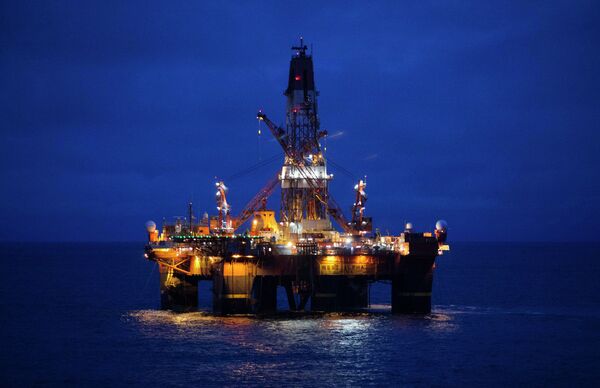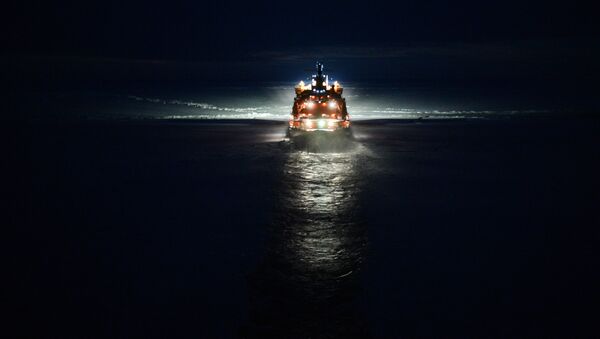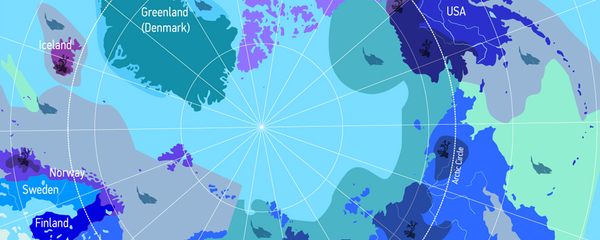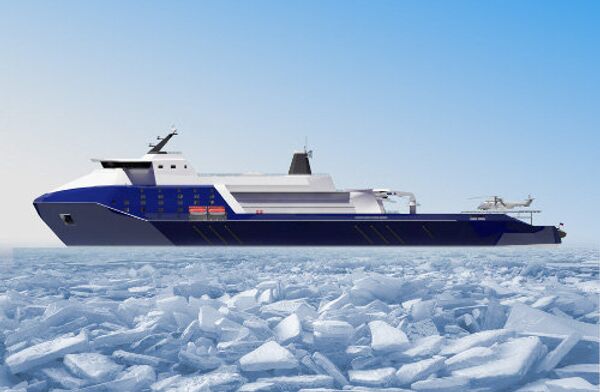Speaking at the forum, Rosatom CEO Aleksei Lihachev emphasized that the company has a wide array of projects and proposals in the areas of transport, energy, mining, and environmental protection, many of them taken into account by the government and by companies operating in the region.
For example, Rosatom's nuclear icebreakers are actively assisting in the creation of the so-called Northern Sea Route, the new northern shipping route running along the Russian Arctic coast from the Kara Sea to the Bering Strait. The Bilibino Nuclear Power Plant, meanwhile, provides power to the Arctic territories. Furthermore, the company is justifiably proud of its role in solving existing ecological problems associated with the so-called 'nuclear legacy', dismantling and disposing of nuclear-powered thermoelectric generators and helping to reduce radiation in contaminated areas.
Speaking to Russia's RIA Novosti on the sidelines of the forum, Rosatom Director General for Innovation Management Vyacheslav Perhukov emphasized that the state program on Arctic development has taken many of the company's proposals into account. According to the official, this includes Rosatom's proposals on development of Russia's nuclear icebreaker fleet, as well as its proposals ensuring nuclear and radiation safety. Other proposals, as might be expected, include the provision of nuclear power to the Arctic territories, and even projects to create new steel and alloy mixtures and compounds for use in Arctic conditions.
The Planet's Northernmost Mining Cluster
Rosatom is playing an active role in the construction of a new major industrial cluster in the Arctic, which it plans to locate on the Novaya Zemlya archipelago for the mining and processing of lead and zinc ores. The state corporation's mining division, Atomredmetzoloto (ARMZ) signed an agreement with the Arkhangelsk Region's government at the forum on the broad issues associated with this project.
When completed, the Novaya Zemlya initiative will be the largest mining and processing plant in the Arctic –processing about 220,000 tons of zinc and 50,000 tons of lead concentrate per year, as well as 16 tons of silver. An estimated 27 billion rubles (or $479 million US) is expected to be invested in the project, which will begin operations in 2021 or 2022. Rosatom's CEO emphasized that domestic and foreign buyers have already shown an interest in the project's output, with preliminary agreements already being worked out.

ARMZ, Rosatomflot (the Rosatom subsidiary maintaining Russia's fleet of nuclear-powered icebreakers) and mining company VostokUgol have also signed an agreement which would help build a seaport to support the operation of the mining megaproject.
Also at the forum, Atomenergomash (Rosatom's power plant industry subsidiary) and Novatek (Russia's largest independent gas producer) signed an agreement on forming a partnership on the localization of production of equipment, pipelines and large-capacity modules for LNG plants, including new domestically-produced steel grades.
A Fleet of Nuclear Icebreakers
'The Arctic: Territory of Dialogue' forum also featured a great deal of discussion on the construction of new nuclear icebreakers to strengthen Russia's leadership in the Arctic. At the moment, St. Petersburg's Baltic Shipyard is building a series of three universal nuclear icebreakers, known as the LK-60Ya (or Project 22220) icebreaker. When commissioned in 2019, the first 33,500 ton vessel, launched last June, will become the world's largest and most powerful icebreaker, surpassing another Russian vessel, the 50 Let Pobedy.
The new class of icebreakers will be tasked with escorting convoys through the Arctic's difficult maritime conditions, breaking through ice up to three meters thick. The ships will allow cargo vessels to carry hydrocarbons from fields in the Yamal and Gydan peninsulas to the Kara Sea, or even markets in Asia. The icebreakers' dual-draft design makes them ideal for use in Arctic waters, and at the mouths of Russia's polar rivers.
According to officials, following the Arktika, the other two ships — the Siberia and Ural, will be delivered in late 2020 and 2021. Talks are also underway about the construction of two more LK-60Ya-class ships. Speaking to RIA Novosti, Deputy Prime Minister Dmitri Rogozin said that additional ships will be ordered if and when traffic volumes grow, and when the so-called eastern route (from the Sabetta LNG plant, presently under construction) to Southeast Asia begins its operations. "Taking into account the technological cycle required for manufacturing the icebreakers, we will make the relevant decision on time," the official stressed.
Negotiations on the LK-60Ya ships also take into account plans to build another vessel – the LK-110Ya, also known as the 'Leader'. This massive, 206 meter-long, 55,600 ton vessel is expected to be laid down in 2019. The icebreaker is designed to allow for year-round Arctic navigation, regardless of weather conditions, not only along the Northern Sea Route, but also on the so-called high-latitude Arctic route.
Mobile Floating Nuclear Power Plants
Work is underway to create a power plant based on the Akademik Lomonosov floating nuclear power plant, a pilot project designed to provide electricity to the Chukotka Region. According to officials, the construction of such floating power units would require efforts to optimize the original project, reducing its cost and the time required for its construction.
Speaking to RIA Novosti on the sidelines of last week's forum, Atomenergomash CEO Andrei Nikipelov confirmed that the subsidiary, other Rosatom companies, and the Iceberg Design Bureau were already working on this optimized floating power plant design.
"This is a non-self-propelled vessel for the supply of electrical power to facilities engaged in the exploitation of natural resources or to remote settlements, where the demand for electricity is high, and the lack of generation capacity has to be compensated by diesel generators," the official explained. This project "can become a reliable source of energy for the development of the Arctic shelf," he added.
Nikipelov noted that designers have already come up with a conceptual design and the scheme for the ship's its operation. Preliminary negotiations with potential customers are also underway. The project will take account of a number of innovations to improve on the Akademik Lomonosov design, including improved ship-based reactor systems, known as RHYTHM-200M. With a total generating capacity of 100MW, these units can generate 30% more power, and are smaller than the units aboard the Akademik Lomonosov, meaning that the overall size of the mobile generating ship itself can also be reduced.
Ultimately, with a diverse array of impressive projects already under its belt, and plans for more, Rosatom has demonstrated that it has the intention to participate very actively in Russia's third wave of industrial-scale development of the Arctic region.






